How to insulate a garage with your own hands?
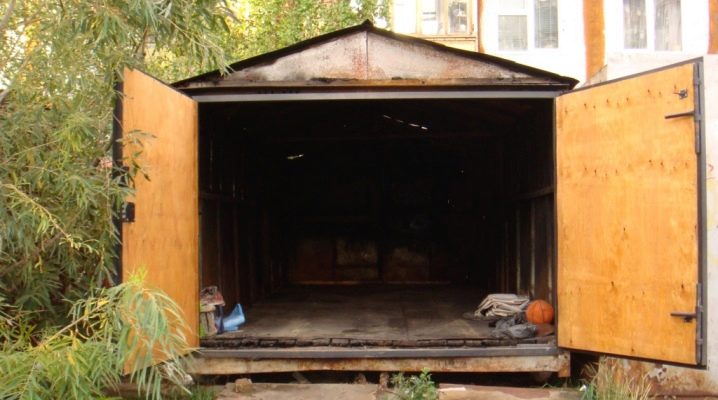
An important feature for maintaining the good condition of the car is not only its correct operation, but also favorable storage conditions. An unheated garage can only protect the car from natural factors such as rain, wind or snow. A big plus in this case is the reduced risk of rust. But sometimes this is not enough.
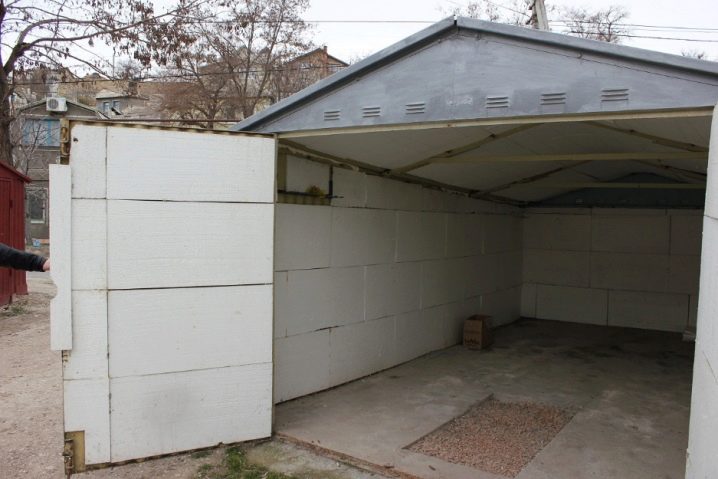
In the cold season, the temperature in the garage drops sharply, and a long stay of the car in such a room is not good for it. In addition, many motorists like to spend their free time in the garage, and it is extremely uncomfortable to work, and just be in a cold room. This problem is solved quite simply by insulating the garage, which can be done with your own hands, without any special financial and physical costs.

Peculiarities
The most optimal temperature for storing a car in a garage is +5 degrees. It is not recommended to make the room too warm, because sudden temperature changes are harmful to the mechanisms of the car. If the car drives into a very warm garage from freezing temperatures, then this can lead to condensation. The same thing happens when the temperature in the garage is too low. In turn, the appearance of condensation leads to the formation of corrosion, harmful fungi and mold appear on the parts of the car.

Also, for a comfortable microclimate in the garage, you should take care of the ventilation system. This will have a good effect on the condition of the car, but this factor is more important for a person who spends a lot of time in the garage.
You can insulate the garage both from the inside and outside. A rather weighty argument for external insulation of a garage is human health, because many heaters contain chemical impurities and can emit harmful substances, so they should be placed exclusively outside the premises. Therefore, if external insulation of the garage is planned, then the environmental friendliness of the material does not play a big role, because it will be located on the outside. But in this case, you should pay attention to the material's resistance to high humidity, temperature extremes and other natural factors.

Internal insulation of the garage does not require increased wear resistance of the insulation, but its composition is important.
Types of buildings
It is also worth considering such subtlety as the material from which the garage itself is made. Depending on this, it is necessary to select a suitable insulation for each material.
There are several ways to insulate a garage with brick walls:
- Plastering. This method is the use of fiberglass mesh. Then a layer of plaster is applied to this mesh. It is also desirable to lay an additional thermal layer. For this, siding, plastic or lining are used. The disadvantage of this method is the large amount of time it takes to complete it.
- Double insulation method brick garage. The big advantage of this method is the long-term preservation of heat in the room.
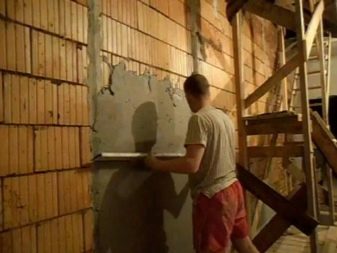
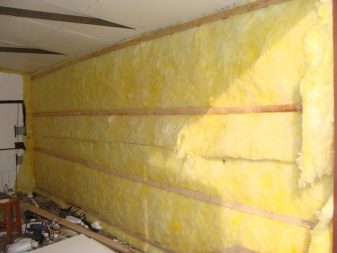
For garages made of corrugated board or profiled sheet, the following types of insulation are used: based on mineral fibers, expanded polystyrene plates and liquid polyurethane foam. To insulate the garage floor, it is recommended to dig a pit about 45 cm deep.After the recess is ready, its surface should be laid out with sheets of roofing material. Expanded clay is most often used for floor insulation. It must be poured into the pit in a layer of 25-30 cm. In order for the layer to be even, it is recommended to install beacons.
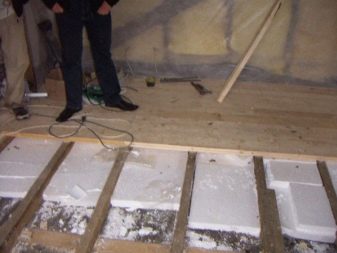
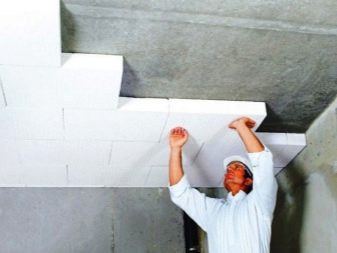
Next, a metal mesh is laid on the expanded clay layer. After that, a screed is already poured from a solution of sand and cement. It is very important to align the screed precisely after pouring. It is better not to put anything on fresh concrete at first, but to let it dry thoroughly for several days.
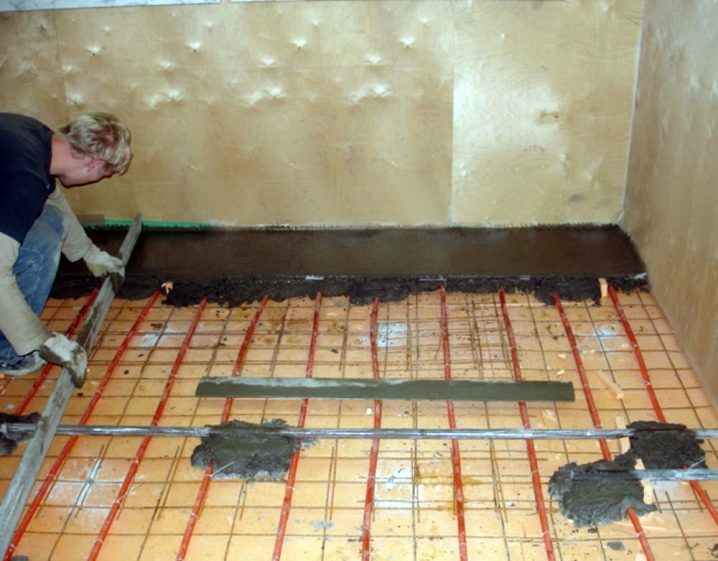
To insulate the garage door, a layer of polyethylene is often used. First, cut the polyethylene into equal strips. Their width can be determined by about 30 cm, and the length should be such that the strips do not reach the floor 1.5-2 cm.Then a wooden rail is attached above the doorway, to which polyethylene sheets are attached. You can do this with a stapler.
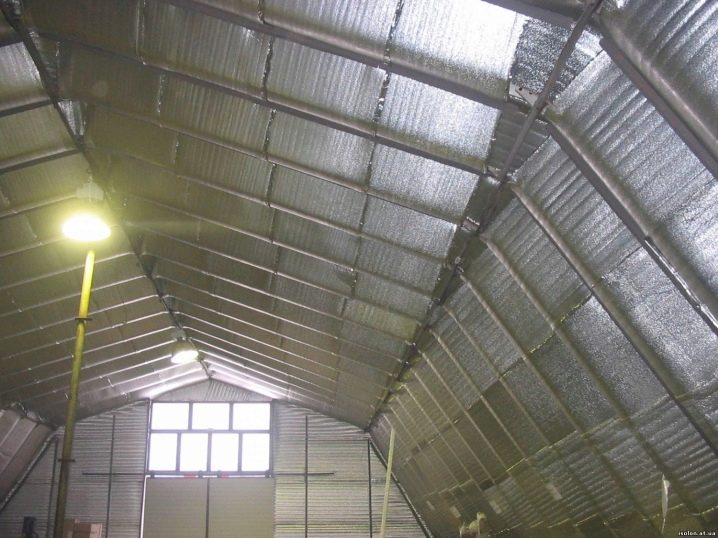
Most often, foam is used as an internal insulation for garage walls. This is an inexpensive, fast, and most importantly, effective way to insulate a garage from the inside. But before proceeding with the insulation of garage walls, it is necessary to carefully prepare them for work. To do this, it is worth removing the old coating and trying to clean them as much as possible from dirt. With the help of a putty, it is necessary to patch up all the irregularities in the walls and level the surface. For insulation such as polystyrene, it is important that the base is as flat as possible.
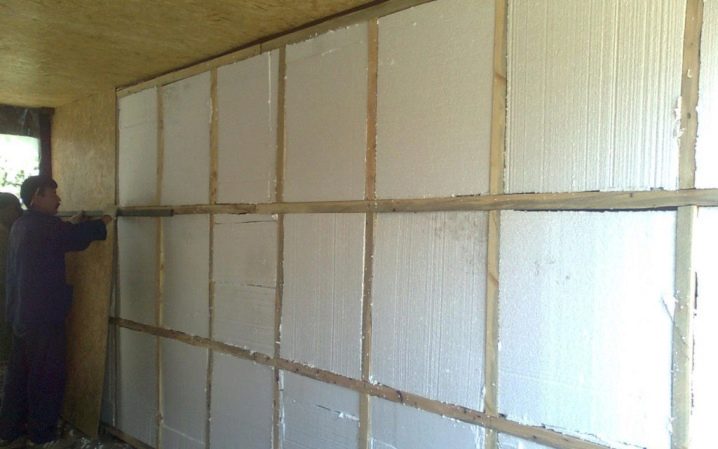
The next stage is the surface treatment of the wall. It is extremely important here to work out the wall with some kind of composition from fungus and mold. Then the surface is covered with a primer. It ensures a secure connection of the foam boards to the wall surface.
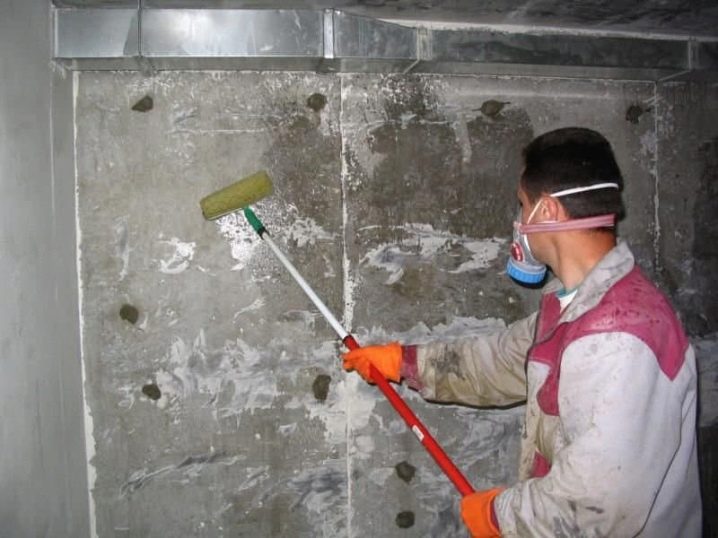
The next step is to proceed directly with the installation of thermal insulation. The thickness of the foam board is approximately 10 cm. If this is not enough, an additional layer can be used. To adhere the insulation to the wall, you need to apply special glue to the plate. It is not necessary to apply it in a continuous layer. For better fixing of the insulation, it is attached with dowels.
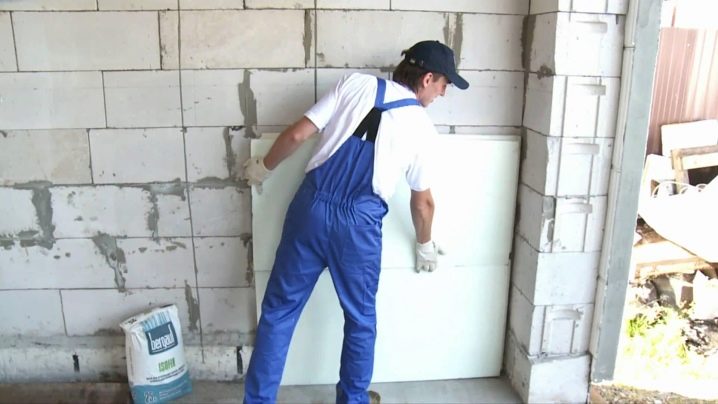
After the main layer of insulation is ready, it is necessary to strengthen the thermal insulation. To do this, a large layer of glue must be applied to the foam. Then take the reinforcing mesh and press it tightly into this layer. Then you can apply plaster. The mesh should not stick out of the plaster, so it should be applied thickly, but evenly.
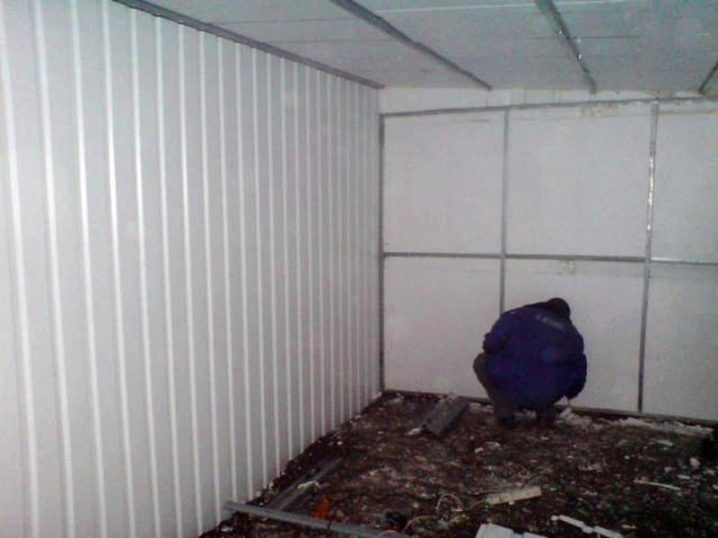
This completes the insulation of the garage wall. Thermal insulation can be painted or finished with any material.
- Insulation of the walls of the garage along the crate. For this, a frame is created, thanks to which better air ventilation is carried out. For the lathing, it is best to use softer insulation materials. The frame of the lathing is made of vertical iron racks. Before installing the insulation, a waterproofing film is laid on the lathing with an overlap, after which the insulation is laid. Thermal insulation can be finished with chipboard or plywood.
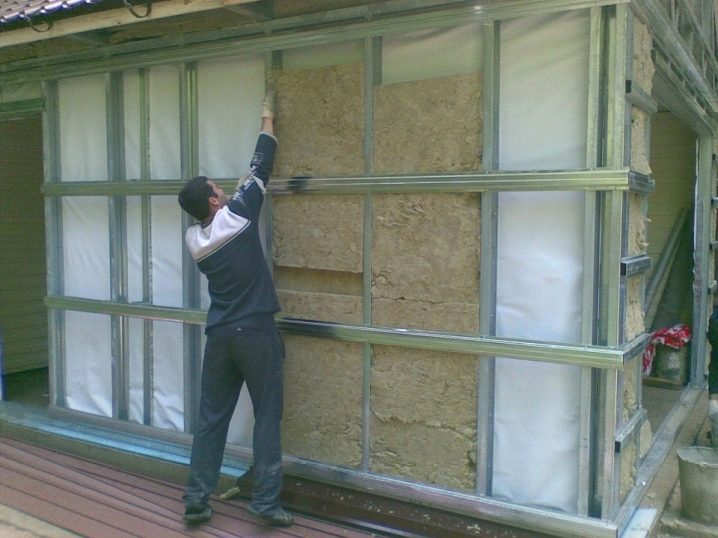
Ceiling insulation is the final stage in the large-scale insulation of the garage. Here it is worth considering some of the subtleties that depend on the design of the roof. It is quite simple to insulate a wooden garage roof. To do this, foam sheets are nailed to the roof using dowels or nails. It is also important to lay a polyethylene film on the insulation. For a pitched roof, you can use the same method.
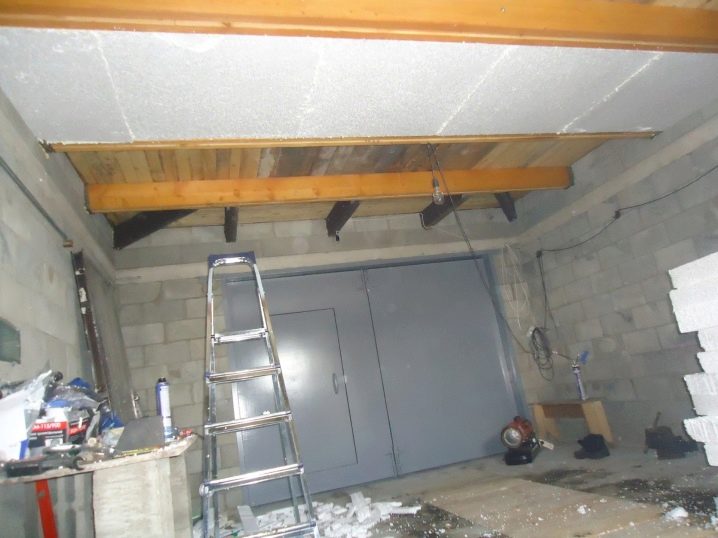
To insulate a concrete roof, you will have to make a frame. To do this, you should make an ordinary crate and lay insulation in its intervals. Often, not foam, but mineral wool is used to insulate roofs.
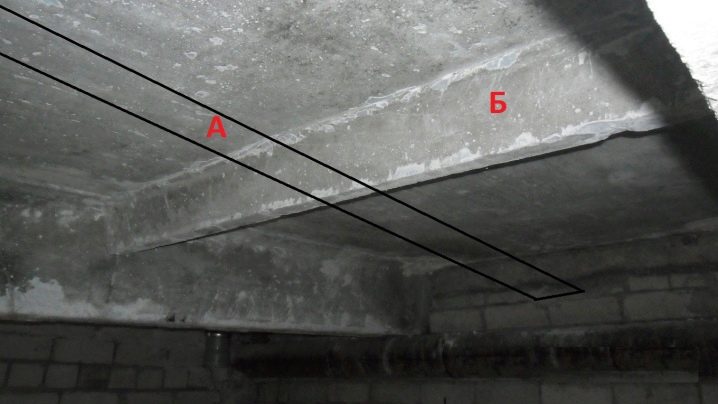
Choice of materials
Mineral wool is one of the most popular insulation materials that is used in large quantities. Mineral wool also has some varieties. One of the best is basalt mineral wool.There is a big plus in insulation with mineral wool - it allows air to pass through well, but at the same time retains heat in the room. Installation of mineral wool does not require much effort. It is also an excellent sound absorbing material.
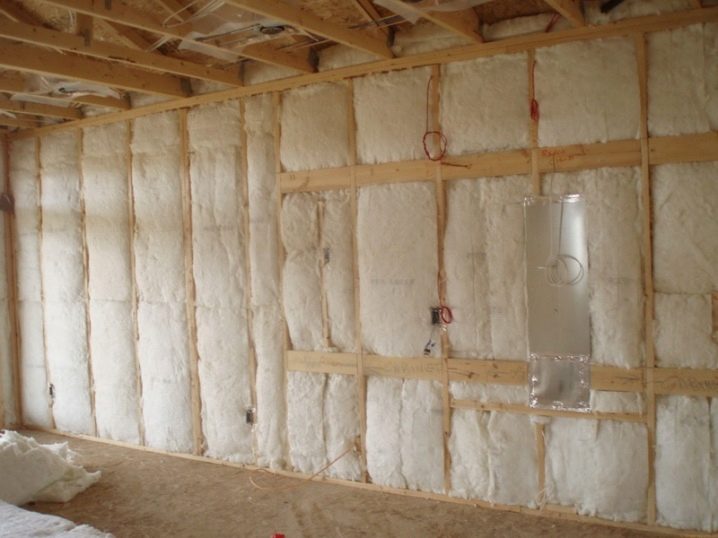
Glass wool is often used for insulation. The big advantage of such a heater is its low cost. However, this material will deteriorate if it gets wet. Therefore, during installation, you need to cover the material with a waterproof film. It is only necessary to work with such insulation with gloves, since its fibers are dangerous for the skin.

Polyfoam is one of the leaders among insulation materials. This material is low cost, lightweight, water and biological resistant. One of its varieties is expanded polystyrene. This material has very good durability and service life. The only drawback of such a heater is rapid ignition on contact with fire. Such material will cost very cheaply.
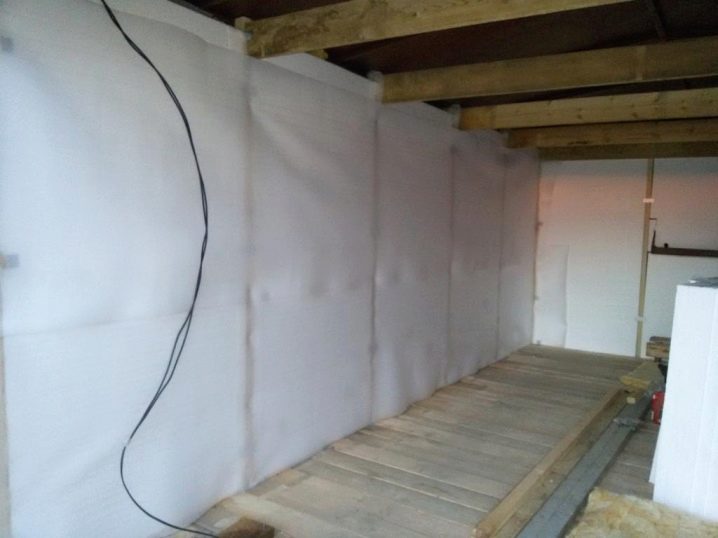
Warm plaster is an innovative means of warming rooms. The composition of such plaster can include foamed vermiculite, sawdust and expanded polystyrene. This material is recommended to be combined with other heaters, because in order to achieve the desired effect, you will have to apply a very thick layer of such plaster.
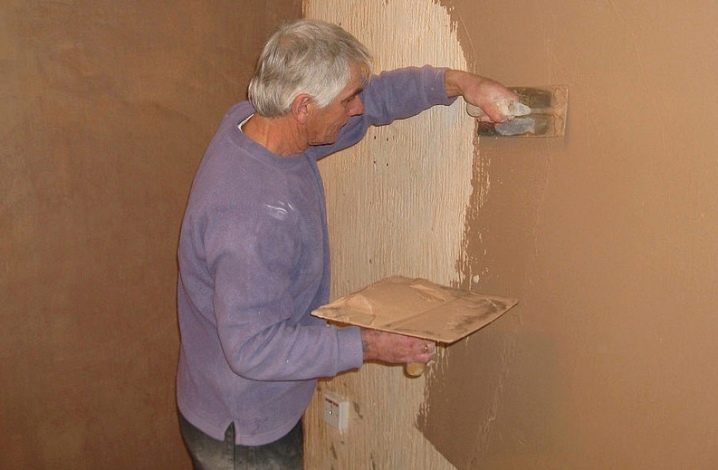
Thermal insulating paint is also used to paint the garage. This paint contains acrylic polymers. This is a fairly effective insulation, which, in addition to its properties, has an attractive appearance. Almost any surface is suitable for applying paint.

Polyurethane foam is a fairly new material, but it has already established itself from the best side. It is waterproof, resistant to various influences. A big plus in polyurethane foam insulation is that after application it fills empty spaces in the surface and fits well with other materials. Such insulation has a long service life and is not at all afraid of fire. Nevertheless, it is quite difficult to carry out the installation of this insulation yourself, since it is necessary to use special equipment.
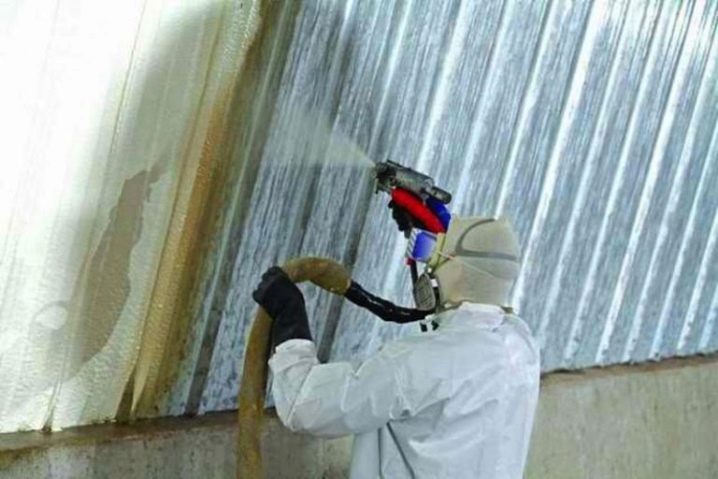
Therefore, it is better to seek help from professionals who will save time and do the job better. Although you will have to pay for this, the result will meet all expectations.
Foil insulation is also noteworthy. Its advantages are that the foil reliably keeps the heat in the room. That is, the heat loss when using such a heater is minimal. Also, the material is very resistant to all kinds of influences and has a long service life. Penofol is one of the foil insulation materials.
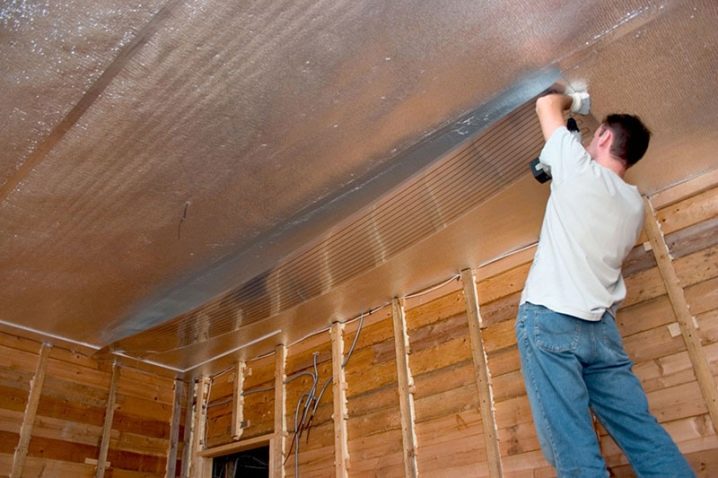
Penoplex is manufactured using special extrusion machines. They provide it with strong foaming and, as a result, an increase in volume. Outwardly, this material is very similar to foam. But it is distinguished by increased strength and durability. Penoplex is produced in slabs from 20 to 100 mm thick. Penoplex insulation provides a sufficient level of heat in the room.
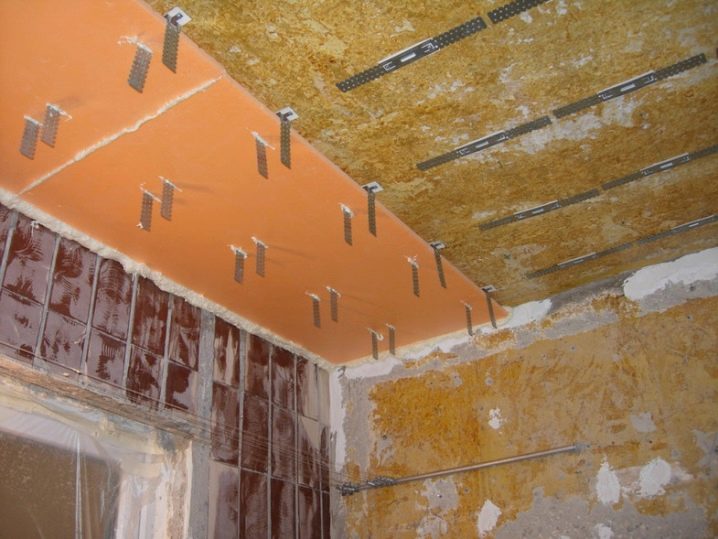
Isolon also belongs to foil insulation. Insulating the garage with isolon, you can achieve good sound and water absorption. This insulation is not only a heat insulator, it is a versatile material that has many uses. Isolone production consists in the processing of polyethylene mass, which is foamed with the help of special blowing agents. From this technology, the insulation becomes porous and has sealed cells in which atmospheric gas is located. The appearance of the isolon is made up of elastic sheets, which, although thin, are quite dense. Usually the material is white, but with the introduction of mineral pigments into it, it acquires a different color.
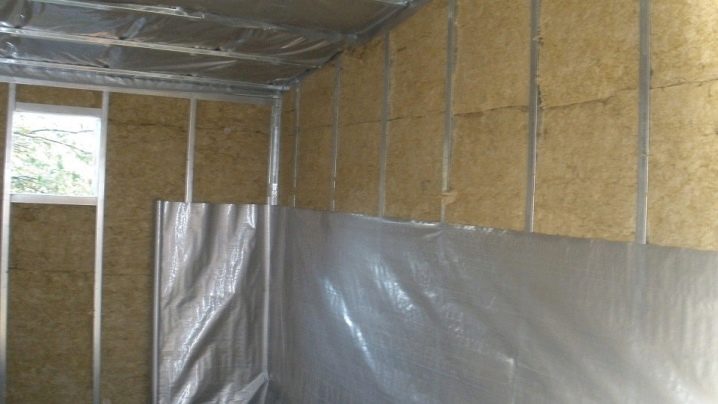
OSB consists of several layers of coniferous wood.Its main component is 60-90 mm elongated chips, which are sometimes called “wood wool”. Insulation is very durable and can withstand heavy loads, unlike plywood or chipboard products. Insulation made of this material is characterized by good density and durability. Such boards are quite moisture resistant, but sometimes they need additional impregnation.
There are some types of such insulation:
- OSB-1 - such insulation is suitable for rooms with a low level of humidity, since it is quite susceptible to water;
- OSB-2 - it is best used in a dry room to insulate the supporting structure, since such a material is durable, but sensitive to moisture;
- OSB -3 - insulation that is resistant to high humidity and is quite durable;
- OSB-4 is the best version of this insulation, which is not at all afraid of water, has a high density, is resistant to various mechanical damage and has a long service life.
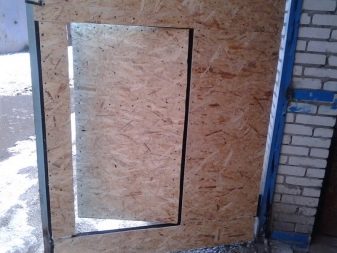

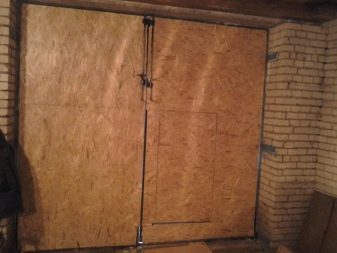
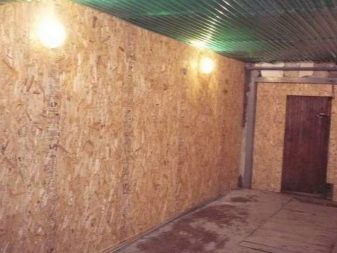
Foam is one of the most popular thermal insulation materials. Its installation is carried out for the insulation of premises almost everywhere. Polyurethane foam is a biologically pure material. This insulation does not emit any harmful vapors. Polyurethane foam has a long service life and retains its characteristics for a long time. Also, polyurethane foam can be easily used with other materials that it will not damage, but rather, on the contrary - when applied to wood, foam helps protect wood from mold and mildew, and if applied to metal, the risk of corrosion is reduced.
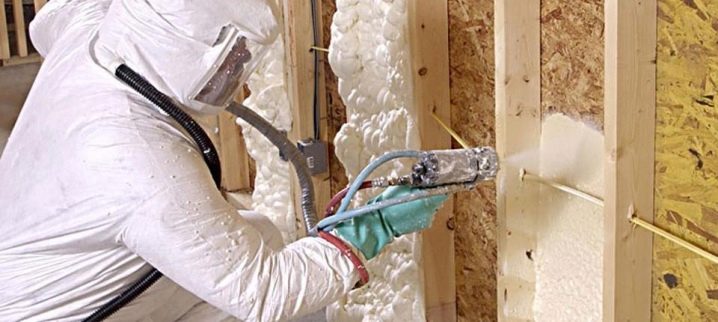
Cellar insulation
In some garages there is a cellar, which must also be insulated so that heat does not escape through it. The installation of insulation in the cellar is not particularly different from the installation of insulation on the walls of the garage. But it is important to remember that the basement is a damp room, therefore, in order to insulate it correctly, materials that are resistant to moisture should be used. Styrofoam or polystyrene foam is good for this. In order to quickly, effortlessly, and most importantly, economically carry out the insulation of the ceiling in the basement of the garage, you can use polystyrene foam. To fix its sheets on the stream, you should use glue and a set of special dowels in the form of umbrellas.
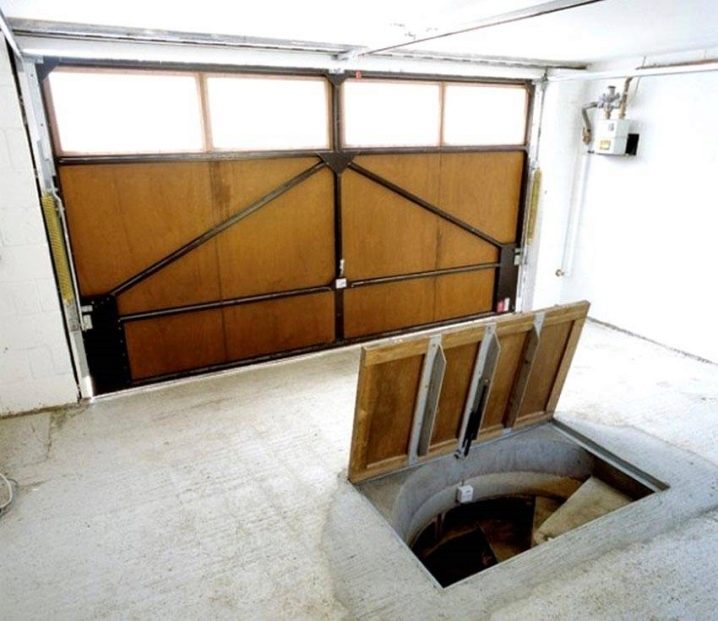
If any gaps and holes appear during the insulation process, then you need to use polyurethane foam to fill them.
One of the main factors in a warm basement is a good floor. It is very important to insulate it.
If the basement of the floor in the cellar is unpaved, then the following instructions must be followed:
- first it is worth digging a pit about 30 cm deep;
- then crushed stone is poured to a height of about 10 cm;
- after that, sand is poured onto the crushed stone, it is extremely important to make its surface as even as possible, so it is carefully rammed;
- the surface is poured with hot bitumen, this allows for good waterproofing, since the basement is a rather damp room due to the close location of groundwater;
- then a reinforced metal mesh is placed on the poured surface;
- at the end, a concrete solution is poured, which must be leveled and left for a long time to dry completely.
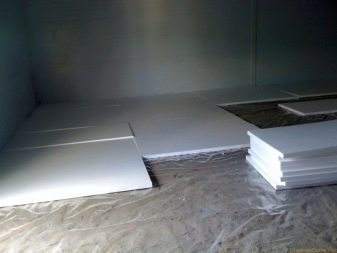
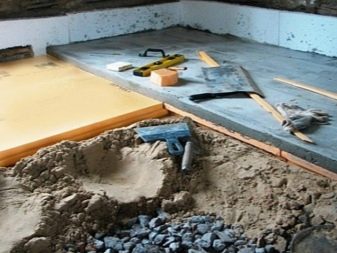
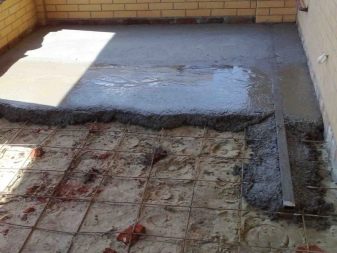
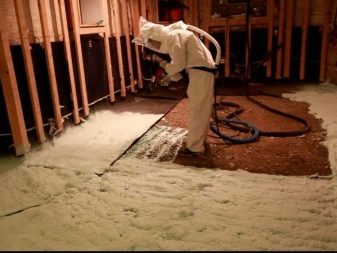
Helpful hints and tips
To heat the garage, you can install some devices in it, one of which is a stove-stove. It's nice to work in a heated garage, and you can just spend your free time in good company. But do not close up the ventilation that provides air flow into the garage. Brick and concrete garages retain heat better.

It is advisable to leave the car in a warm garage only with a full tank. Heated gasoline tends to expand, and when going into frost it contracts, so moist air is drawn into the tank. This is how water ends up in the fuel system.
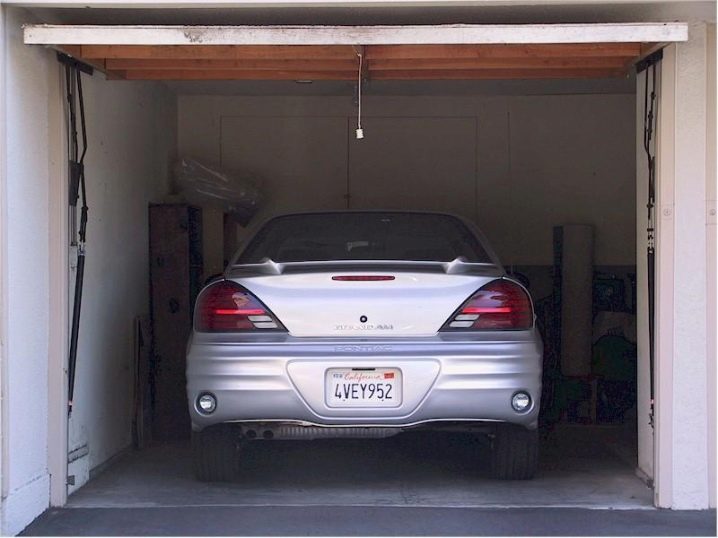
When insulating a garage inside with foam or a similar material, it should be pre-treated with a rodent repellent, since mice and rats like to make nests in such material.

You should use a material that will allow air to pass through well, otherwise a greenhouse effect will be created in the garage. The same applies to materials for finishing the premises.
Ventilation should be located at two corners of the room, due to which better air circulation is achieved.
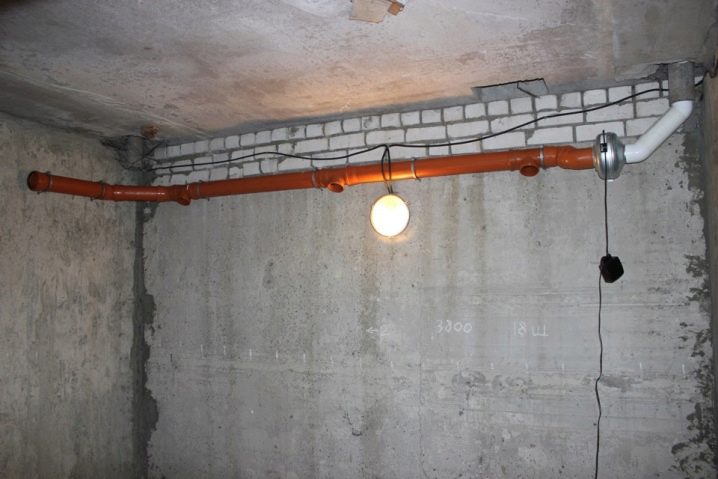
For information on how to insulate a garage with your own hands, see the next video.





























































The comment was sent successfully.